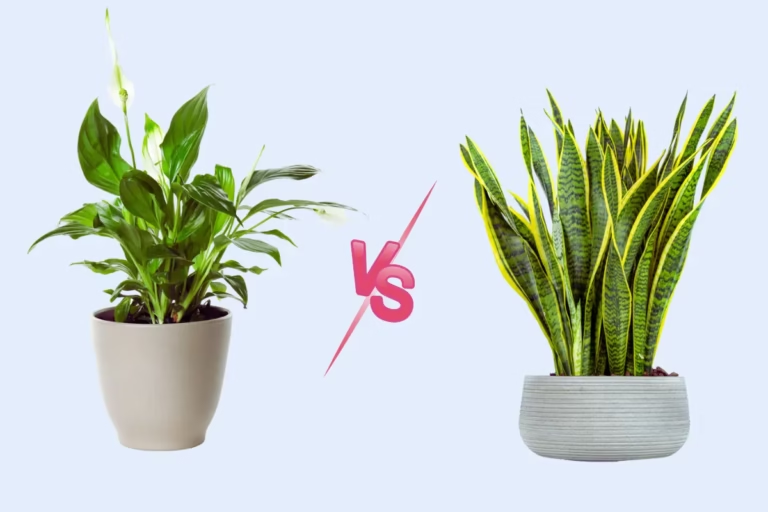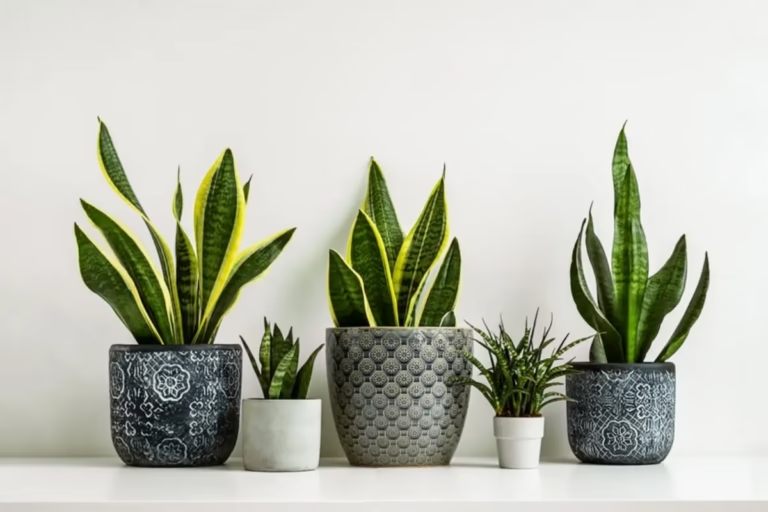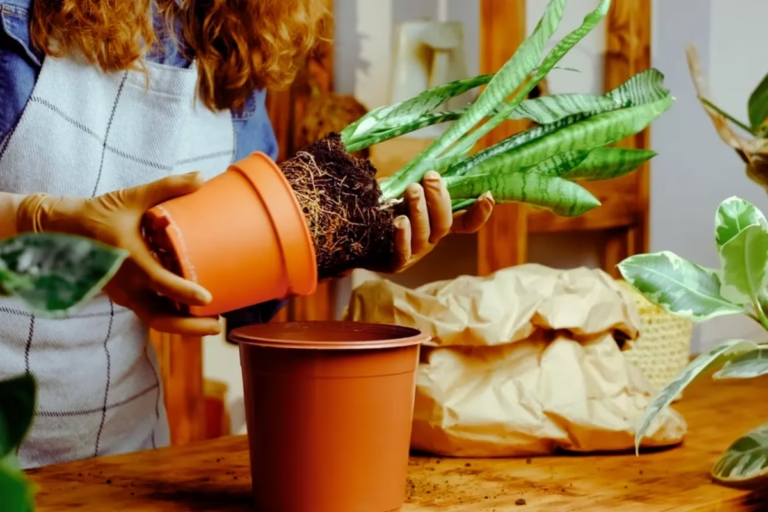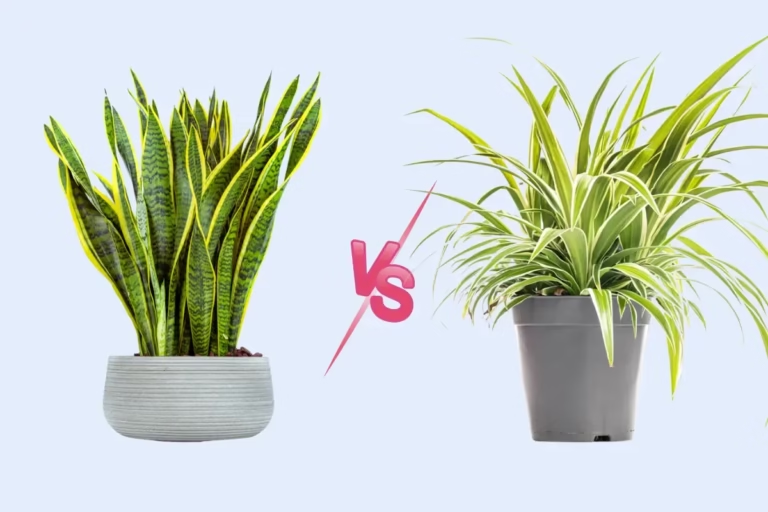Healthy Snake Plant Roots vs Unhealthy: Spot the Red Flags

Ever wondered what’s really going on beneath your snake plant’s striking leaves? While the tall, upright foliage gets all the attention, it’s the roots that quietly make or break your plant’s health. Healthy snake plant roots are the hidden champions of growth, while unhealthy roots are often a silent cry for help.
If your snake plant suddenly starts yellowing, drooping, or smelling funky, your first instinct might be to blame the leaves or light. But most often, the real issue lies underground. This guide breaks down exactly what healthy and unhealthy snake plant roots look like, how to fix problems fast, and how to keep your plant’s root system strong.
Quick Answer:
Healthy snake plant roots are firm, white to orange in color, and have a fresh, earthy smell — they support strong growth and easy care. In contrast, unhealthy roots are brown or black, mushy, and often smell foul due to root rot, usually caused by overwatering or poor drainage.
What Is a Snake Plant?
The snake plant (Dracaena trifasciata) is a hardy, drought-tolerant houseplant with tall, stiff, variegated leaves. Often called “mother-in-law’s tongue,” it thrives in low light and dry conditions, making it ideal for homes and offices. Its air-purifying qualities and striking form have made it a favorite among plant enthusiasts worldwide.
Differences Between Healthy and Unhealthy Snake Plant Roots?
Healthy and unhealthy roots differ dramatically in appearance, texture, smell, and growth behavior.
Quick Comparison Table
Feature | Healthy Roots | Unhealthy Roots |
Color | Creamy white, tan, or orange | Brown, black, gray, or translucent |
Texture | Firm, slightly moist | Mushy, slimy, brittle, or stringy |
Smell | Fresh, earthy | Foul, sour, or rotten |
Rhizomes | Plump, orange/white, solid | Shriveled, leaking, soft |
Root Spread | Even, non-circling | Clumped, sparse, or root-bound |
Healthy roots are firm and fresh, often with orange-hued rhizomes (storage organs) that support propagation. In contrast, unhealthy roots look dark, feel soft, and often emit a foul odor due to root rot, which is caused by overwatering and fungal infections.
What Makes Snake Plant Roots Healthy?
1. Color & Texture
Healthy roots are typically white, tan, or orange, depending on the variety and age. They should feel smooth and firm, with no mushiness.
2. Rhizome Health
Rhizomes (thick underground stems) are common in Dracaena trifasciata. Healthy ones are plump and pale orange, helping your plant spread and store energy.
3. Smell & Moisture
Healthy roots don’t smell bad. A neutral, earthy scent is normal. If the soil is just slightly moist and well-draining, your roots are likely in good shape.
4. Growth Habit
Well-maintained roots spread evenly through the pot, not tightly coiled or poking from drainage holes.
What Causes Unhealthy Snake Plant Roots?
The Sansevieria Unhealthy roots usually result from overwatering, poor soil, or compact pots. Here’s what typically goes wrong:
1. Root Rot
Caused by fungal pathogens like Pythium or Rhizoctonia, root rot sets in when water sits in the soil too long. The roots begin to decay, turning brown or black and giving off a foul smell.
2. Overwatering
Snake plants are drought-tolerant. Too much water suffocates the roots and causes them to become mushy.
3. No Drainage
Pots without drainage holes trap excess water, leading to soggy soil and unhealthy roots.
4. Compacted Soil
Dense soil holds water and limits airflow, increasing the risk of root diseases.
How Can You Fix and Prevent Unhealthy Roots?
If your snake plant shows signs of root rot or decay, act fast. Here’s how to safely rescue and protect it from future problems.
1: Unpot the Plant Gently
Carefully remove the plant from its container to avoid damaging healthy roots. Tilt the pot or squeeze its sides if needed.
2: Rinse Roots with Lukewarm Water
Use lukewarm water to wash away soil and expose the roots clearly. This helps you inspect their condition without stress.
3: Trim Away Damaged Roots
With clean, sterile scissors, cut off any mushy, black, or foul-smelling roots. Only firm, light-colored roots should remain.
4: Let Roots Air-Dry
Place the plant in a cool, dry place for 6–12 hours. This prevents fungal growth and allows wounds to callous over.
5: Repot in Well-Draining Soil
Use a dry cactus or succulent mix blended with perlite or coarse sand. Avoid reusing old, wet soil.
6: Use a Terra Cotta Pot with Drainage
Choose a breathable pot with at least one drainage hole. Terra cotta helps wick away excess moisture from the soil.
7: Hold Off Watering
Wait 7–10 days before watering. This gives roots time to recover and reduces the risk of re-infection.
Healthy roots are much easier to care for. They require basic maintenance, like proper watering and occasional repotting. Unhealthy roots, on the other hand, demand emergency action and recovery time. Prevention is your best strategy.
Related: Do Snake Plants Like to Be Root Bound
Can Snake Plants Recover from Unhealthy Roots?
Yes, but it depends on how far the damage has gone. If more than 50% of the root system is still firm and healthy, your snake plant has a good chance of survival with proper treatment.
Pros & Cons of Healthy vs Unhealthy Roots
For your snake plant, healthy roots make all the difference. When the root system is firm and white, it absorbs moisture and nutrients easily, supports fast growth, and gives you a low-maintenance, odor-free plant.
But if the roots turn brown, black, or mushy, it could be root rot from overwatering — often leading to fungal disease, yellow leaves, or even plant death.
Stick to well-draining soil, don’t let water sit in the pot, and check roots during repotting. Healthy roots = happy, tough indoor plant — just like your snake plant should be.
Final Thoughts
If you want your snake plant to stay tall, green, and proud, don’t ignore what’s happening below the surface. Spotting the difference between healthy and unhealthy roots could be the key to saving your plant from irreversible damage. Take action early, use the right soil and containers, and remember — healthy roots = a happy snake plant.
While the bold leaves stand out, it’s the roots that quietly power your plant. When they’re healthy, the full range of snake plant benefits — like air purification and stress reduction — really shine.




